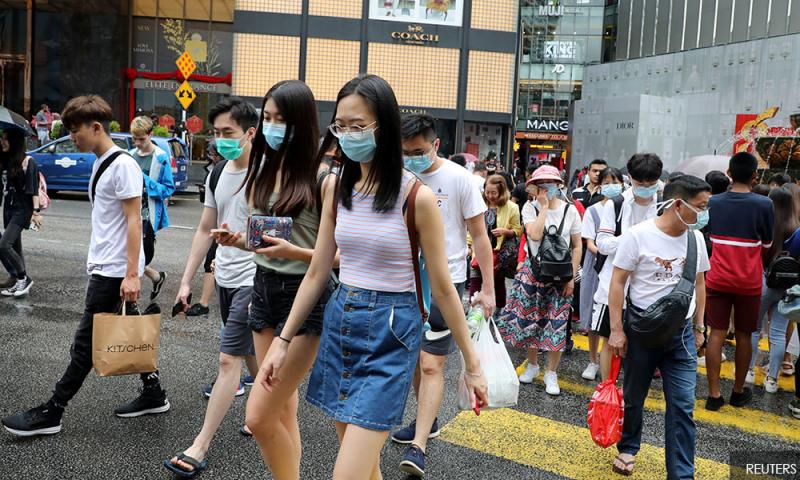LETTER | A long slow recovery for tourism businesses
Tourism Malaysia had posted the latest figures on foreign tourist arrivals in its website. Last year, the total number was 4,332,722, a drop of 83.4 percent compared with 26,100,784 in 2019. The percentage was exactly what I had forecasted that “2020 was bad for tourism, 2021 could be worse”.
In September, I wrote “foreign tourist arrival figures are grim” after results for the first six months of 2020 were released showing a 68.2 percent drop. I projected it would decrease by 83.5 percent for the whole year, and later adjusted it to 83.4 percent.
Last January, then tourism, arts and culture minister Mohamaddin Ketapi dismissed concerns that the coronavirus outbreak would affect visitor arrivals and asserted the ministry could achieve its target of 30 million foreign tourists for Visit Malaysia Year 2020 (VMY2020).
After the Malaysia Tourism Transformation Plan (MTTP) was first announced in 2011 with the target of attracting 36 million foreign tourists and earning RM168 billion in tourism receipts annually by 2020, many people jumped on the tourism bandwagon.
But VMY 2020 had to be cancelled with the onset of the global pandemic and MTTP figures will remain a pipe dream, as the days of mass tourism is over. It will take a long time for Malaysia to receive an average of 2.175 million foreign tourists monthly, as in 2019.
It is certain that the number will not even reach two million for the whole of this year and it is still early to ascertain for next year, as the landscape is still unfolding. This is because actual arrivals for the nine months from April to December last year were less than 100,000, at 99,267.
If this rate were to be repeated for the 12 months of this year, then foreign tourist arrivals will only be 132,356 for 2021. And that was the basis I warned earlier that 2020 was bad for tourism, and 2021 could be worse.
In the best-case scenario, we may get a few hundred thousand foreign tourists this year, mainly from neighbouring countries such as Singapore, Thailand and Brunei that could easily enter Malaysia by road through border crossing.
Their tourism expenditures would greatly benefit retailers, food and beverage outlets and accommodation providers such as hotels and private residences. Many of these businesses are dependent on both foreign and domestic visitors, and difficult to survive on just one.
In 2019, total inbound tourism expenditure amounted to RM89.4 billion while domestic tourism was higher, at RM103.2 billion. But it included RM15.48 billion spent on petrol and diesel, which was the second highest expenditure after shopping for domestic visitors that consist of excursionists on day trips and tourists staying overnight away from home.
Before we can count on the foreign market, we must first work towards the success of domestic tourism. This will only be realised when all interstate travel restrictions are lifted, and standard operating procedures (SOPs) are observed to ensure movement controls are no longer imposed.
Failure to fully comply with SOPa would result in lockdowns and starting all over again, with past efforts going down the drain. And as long as we cannot make a success out of domestic tourism, our borders are unlikely to be reopened for international tourism.
If the rate of Covid-19 infections remains high, very few countries would welcome Malaysians and few foreigners would want to visit Malaysia for non-essential travel.
However hard we may try to promote our country, foreign tourists would opt for safer destinations.

Many tour operators have sunk with little or no income for the 12 months. Those that remained afloat will soon go under as they have piled up more debts than those that chose to suspend operations or closed altogether. It would be cruel to ignore their desperate cries for help.
When borders are eventually opened, outbound tour operators would fare much better than inbound. There is a pent-up demand for those that could still afford to travel or desire to perform the haj or umrah. In 2019, over 300,000 Malaysian pilgrims went to Saudi Arabia.
For inbound tour operators targeting long-haul markets, the numbers will trickle in slowly as the economies of European countries and the United States have been devastated by the pandemic and will take years to recover.
Inbound tour operators that could not survive on just the domestic market for these two years would not be around in 2023. Last July, Prime Minister Muhyiddin Yassin announced that tourism will only recover in 2024, as predicted by the Economic Action Council.
While the start of vaccinations has brought much hope, they are not silver bullets that can end the pandemic immediately. It can take more than a year for enough people in this country to be vaccinated to reach herd immunity.
Until then, it is a delicate balancing act - whether to impose movement control or lift travel restrictions. If the economy remains partially opened, more businesses will collapse. But without movement control, there will be a rise of Covid-19 infections, leading to yet another lockdown.
The views expressed here are those of the author/contributor and do not necessarily represent the views of Malaysiakini.
RM12.50 / month
- Unlimited access to award-winning journalism
- Comment and share your opinions on all our articles
- Gift interesting stories to your friends
- Tax deductable
